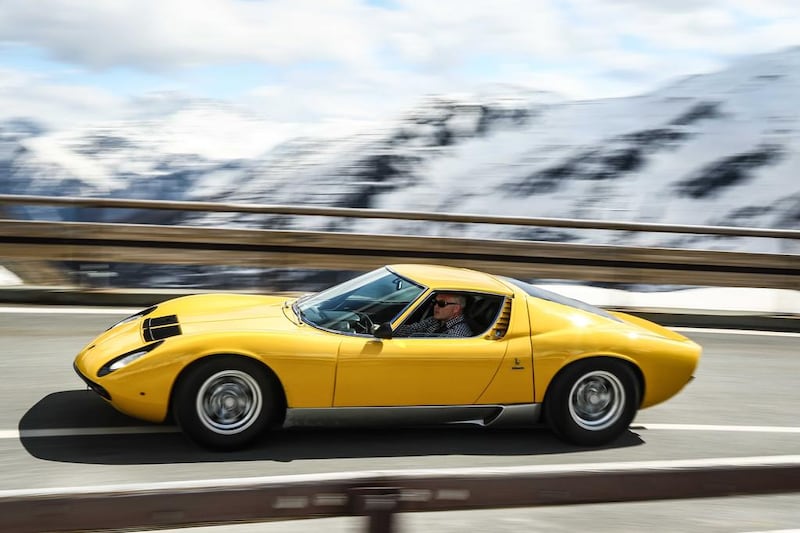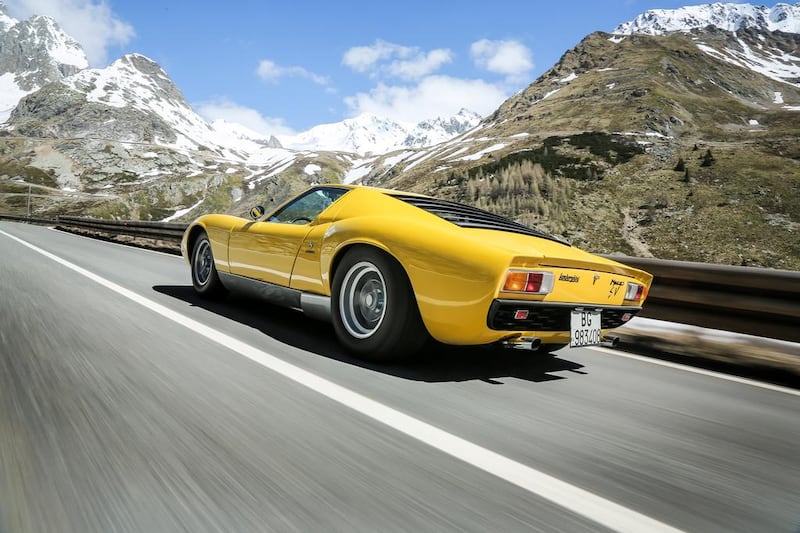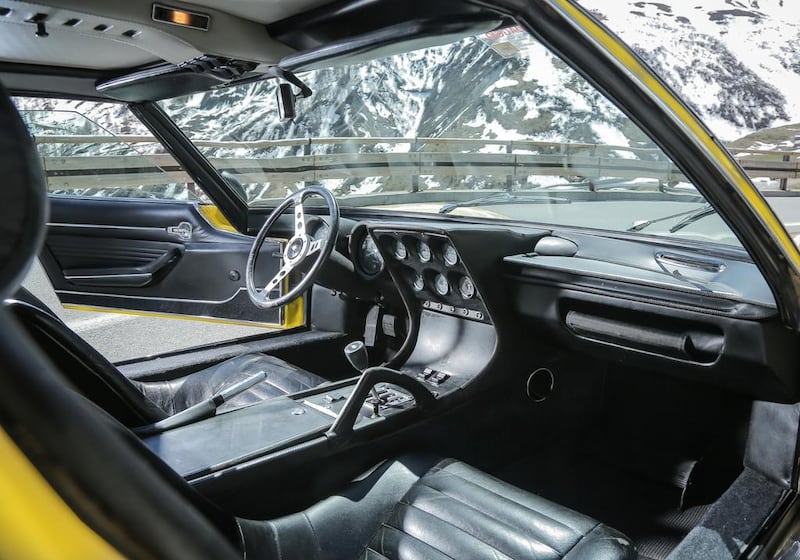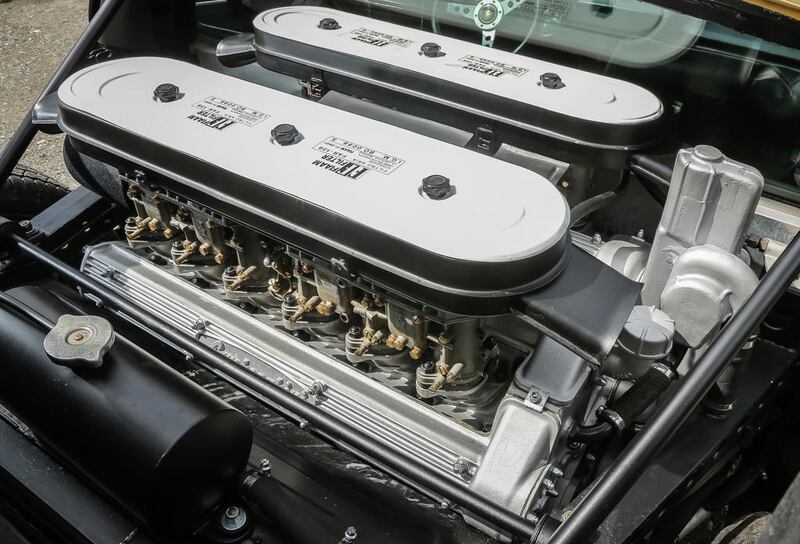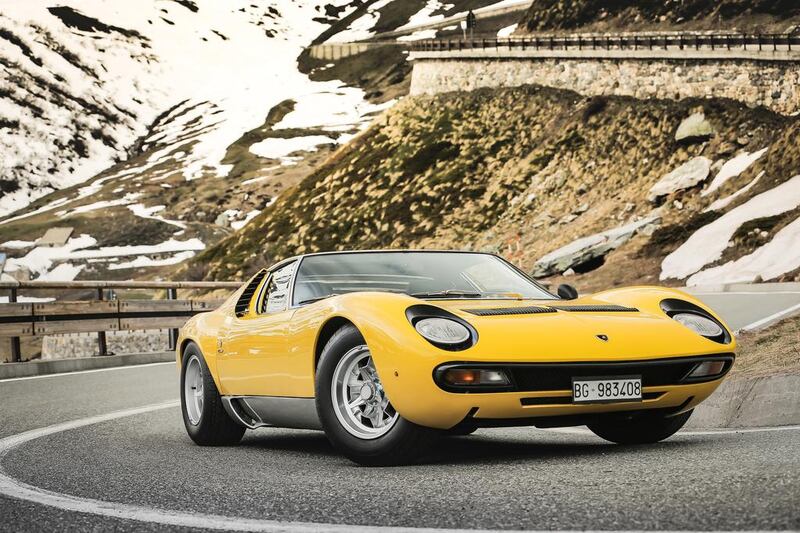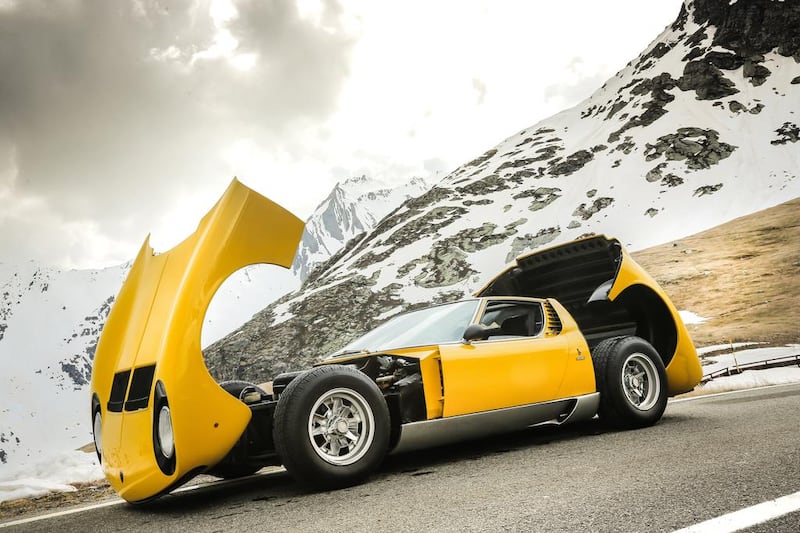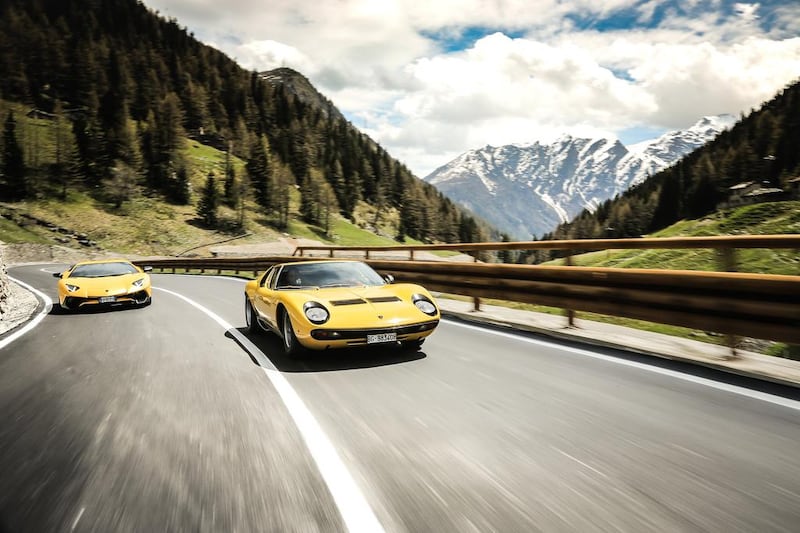The most beautiful car of all time is 50 years old. That no other car has come close to outshining the physical form of Lamborghini’s seminal Miura might seem unreasonable, but times have changed. Aerodynamics, occupant and pedestrian crash protection and a whole host of other reasons have seen to that.
But there’s far more to celebrate when it comes to this classic Lamborghini than its visual perfection. The Miura gave birth to the supercar as we know it. Were it not for a few young men flying by the seats of their pants – and their maverick boss, Ferruccio Lamborghini – the history books would be very different.
Driving a Miura has been at the top of my motoring bucket list for as long as I can remember – something I had resigned myself to never happening, particularly in light of their recent soaring of values. In the past decade prices have risen tenfold – nowadays, a decent one will set you back about US$2 million (Dh7.4m). Fortunately, car manufacturers with rich histories are recognising that their pasts should be celebrated, rather than swept under the rug. And there’s nothing quite like a half-century birthday to provide a reasonable excuse to revisit the history books. I had a feeling that Lamborghini would mark the Miura’s 50th with something special.
Here I am, in Italy, close to the Swiss border, with the driver's door of a bright-yellow Miura SV wide open. And it's mine, all mine. For most people, their introduction to the Miura was when viewing The Italian Job, the 1969 comedy heist movie. In its opening scenes, while the credits roll, an orange Miura S roars onto the screen, and stays there for the duration of Matt Monro's On Days Like These. But as gloriously silken as Monro's voice was, it's the Miura's spine-tingling throttle blip, 16 seconds into the movie, that provides the real music.
For a glorious three minutes and four seconds, the car captivated cinemagoers, catapulting the Miura to international fame. The car, the road, the scenery, the soundtrack – everything was sublime, before the Mafia ruined it all, killing driver and car, dumping them over the edge of a ravine.
For nearly four decades, my idea of personal motoring nirvana has centred around driving that car on that road – precisely what I’m about to do.
First, though, a potted history to explain why this car is so important to the automobile industry. Putting to one side for a moment its heart-stopping beauty, the engineering underneath its aluminium suit was radical in the extreme, and set the template for almost every supercar designed and built since.
Lamborghini had only been building cars for three years when the Miura was unveiled in 1966. A year before, its rolling chassis had been shown to the public, and what was on display was enough for orders for the new car to start trickling in, despite nobody knowing what it would end up looking like. But there was enough there to get the right people excited.
Up to that point, road-going sports cars had their engines up front, with power sent to the rear wheels, but the Miura turned everything around. Taking inspiration from Ford’s GT40 race car, Lamborghini’s chief engineer, Gian Paolo Dallara (who was just 28 at the time), situated the V12 engine behind the cockpit, and designed it so that the gearbox was incorporated in the same housing, similar to the Mini. Everything was then turned horizontally to save space.
All this was achieved by Dallara and two other men – Paolo Stanzani and Bob Wallace – by working in their spare time to convince their boss it was a good idea. When Ferruccio saw what they were up to, he gave them free rein to do as they pleased, believing it to be little more than a potentially effective marketing tool.
Dallara, Stanzani and the car’s designer, Marcello Gandini, have all come along to join in the Miura’s birthday celebrations, and I talk with them before my time in the car.
“[Ferruccio] always wanted to have something better than the others,” Dallara tells me, “more performance than our neighbours [Ferrari]. We were a young company with young designers who had to overcome all sorts of problems – there were so few examples to look to. We made mistakes, but Mr Lamborghini was very tolerant and forgiving. Without that incredible shape, though, it would not have been such a success.”
That shape, Gandini tells me, evolved over plenty of coffee-shop meetings with the engineers. “We were two or three friends meeting up in a coffee bar to discuss requirements. There was no structure back then, and it was just me looking after the design. There was no team like there is today.
“We had two-and-a-half months to get a prototype ready for the Geneva motor show, and the shape was completed at 10pm on Christmas Eve [1965]. The engineers and I followed the same line of thinking – this was just my interpretation of what they were doing at the same time.”
And what a design it was. Though Gandini says his original wish was for the rear to be wider, with fatter wheels and tyres – something that came to pass with the third generation, the SV. And that’s the model I’m handed the keys to. It normally lives in the Lamborghini factory museum, and I have admired its form on many occasions, but when you see a Miura outdoors, its perfect proportions, curves, vents and clever design details all come together to form the ultimate motoring sculpture.
There was more than one road used in the Miura's Italian Job scenes, but the majority of the footage was shot on the Great St Bernard Pass. It's here I take my seat behind the SV's gorgeous, evocative steering wheel. The driving position is absurd, requiring your legs to be far apart, arms outstretched and feet struggling to get to the right pedals. No matter, it's a classic.
I twist the key, and that V12 erupts with a roar that defies description. As I emerge onto the tarmac, flanked either side by the last vestiges of winter snow, I laugh out loud. I simply can’t believe I’m doing this for real. But I am, and for the next hour or so, I wring the life out of this timeless icon to try to find its weak spots. Apart from its antique brakes, there really aren’t any.
The power delivery is smooth, gear changes requiring a fair bit of effort thanks to a truck-like clutch and a recalcitrant shifter, but it feels more than OK to anyone with experience of old cars. Jump into this after spending your whole life driving a new SUV, however, and you wouldn’t cope. It’s hard work, but ultimately rewarding – I have my window down the entire time to help with the cabin temperature, and even then my back is soaked from the sheer physical exertion required to hustle a Miura around hairpin after hairpin. But I wouldn’t have it any other way.
Compared to a modern supercar, the Miura SV feels a bit tame, but it’s still extremely quick if you keep the revs on the boil and gearshifts precise. But it’s engaging in a way today’s sanitised machines cannot hope to be. And the noise. Oh, the noise. Lift off the throttle and it gurgles, cracks and pops – get back on it, and a lowdown rumble becomes full-on roar, then a high-pitched scream. It’s magnificent in every respect.
When my time is up, I’m full of mixed emotions. I have done what I never thought possible, and while I’m ecstatic about that, I’m sad, too, because I just don’t want it to end. I want to keep driving – perhaps take it the 400 kilometres back to the factory in Sant’Agata, rather than pull in and hand the key to its minder. But the Miura remains my ultimate automobile. It will forever be out of my reach to own one, though, and that’s my only regret.
motoring@thenational.ae
